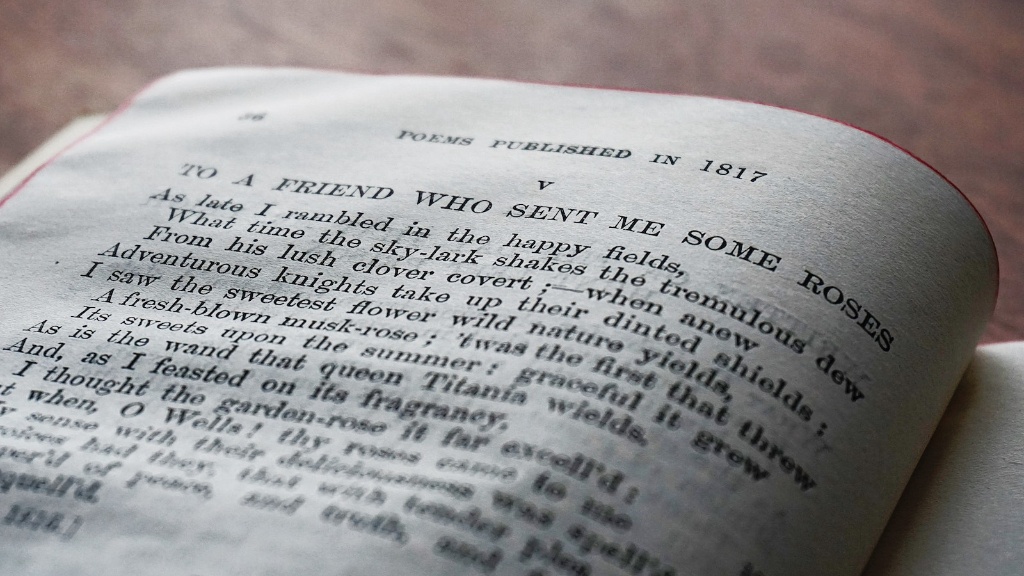Understanding Atmosphere in Poetry
Atmosphere is one of the most important elements of poetry. It is created by a combination of the poet’s language, the setting, and the tone of the poem. It is used to evoke a certain feeling or emotion in the reader. An atmosphere in a poem helps to provide insight into the mood of the speaker, the characters, and the entire poem.
Creating an atmosphere in a poem can be difficult for some, as it requires the use of specific elements of language. For example, with the use of imagery, metaphors, and other elements of figurative language, the poet creates an atmosphere that gives the reader an idea of what is going on in the poem.
How Atmosphere Affects Poetry
Atmosphere in poetry affects the tone, or the emotional impression the reader gets from the poem. The mood is simply the emotion of the poem. It can evoke different emotions in different readers. The atmosphere can range from something light-hearted and uplifting to something dark and sinister.
The poet can also use specific techniques to create an atmosphere. This can include using symbols, allusions, and other elements to evoke a certain feeling. The poet can also use the setting of the poem to create the atmosphere. The setting can range from a small room to the entire universe, depending on the poem. Each setting will create different feelings of tension, curiosity, and emotions that the poet is hoping to evoke.
Examples of Atmosphere in Poetry
To better understand atmosphere in poetry, let’s examine some examples. For example, consider the poem “Do Not Go Gentle into That Good Night” by Dylan Thomas. In this poem, the speaker is pleading with his father not to give up his fight against death. The poem is full of imagery and figurative language that create an atmosphere of desperation and grief.
This atmosphere is created by specific words and phrases, such as “rage against the dying of the light” and “curse God and die”. These words create a feeling of despair and urgency that is essential to the poem. Without the atmosphere created by these words, the poem would not be as powerful.
The Power of Atmosphere in Poetry
Atmosphere in poetry is an effective and powerful way to convey a certain emotion or feeling. It can be used to evoke feelings of joy, sadness, anger, and anything in between. The poet can use different techniques to create a specific atmosphere, such as the use of symbols, imagery, and figurative language.
Atmosphere is essential to any poem, and it can be used in many different ways. With the proper use of atmosphere, a poet can powerfully convey their message and emotions to the reader. By understanding atmosphere and its power, poets can better convey their meaning to the reader and make their poems more powerful and meaningful.
Types of Atmosphere in Poetry
Atmosphere in poetry can range from something uplifting and inspiring to something dark and sinister. Different types of atmosphere can be used to create different feelings in the reader.For example, a theme of optimism can be used to evoke feelings of hope, while a theme of darkness can evoke feelings of fear and dread.
This means that atmosphere can be used to create powerful connections between the poet and the reader. For example, a poet might use an atmosphere of desolation and dread to portray the feelings of a character in the poem. The poet can paint a vivid picture of the character’s emotions and struggles using atmosphere.
Effects of Atmosphere in Poetry
Atmosphere in poetry can have several effects on the reader. It can inspire, evoke emotion, and create a powerful connection between the poet and the reader. It can also be used to create a mood or tone for the poem. This can help to create tension or suspense in the reader, and keep them engaged in the poem.
Atmosphere can also be used to evoke certain emotions in the reader. For example, a poem about love might have an atmosphere of joy and warmth. Similarly, a poem about loss might have an atmosphere of sadness and grief. By understanding atmosphere and its effects, poets can better create powerful poetry.
Techniques Used to Create Atmosphere in Poetry
Creating atmosphere in poetry can be done through the use of certain techniques. This can include using symbolism, imagery, and other elements of figurative language. The poet can also use setting to create atmosphere, as each setting will create different emotions and tensions.
The poet can also use literary devices such as allusion and metaphor to create atmosphere. These devices can be used to evoke certain feelings in the reader by bringing in images, characters, places, and other elements from outside the poem. By understanding and utilizing these techniques, the poet can create powerful atmospheres in their poems.
The Role of Theme in Creating Atmosphere in Poetry
The theme of a poem plays an important role in creating atmosphere. A theme is the idea or concept that the poet is trying to convey through the poem. This can range from something uplifting to something dark and sinister. For example, a theme of loss and grief might create an atmosphere of sadness and sorrow, while a theme of joy and liberation might create an atmosphere of happiness and celebration.
By understanding the theme of a poem, the poet can create an atmosphere that is in line with this theme. This helps to create an emotional connection with the reader, as the reader can connect with the mood of the poet. Each theme will create its own unique atmosphere, and the poet can use this to their advantage when crafting their poem.
The Role of Language in Creating Atmosphere in Poetry
The language used in a poem can also be used to create atmosphere. The poet can use specific words and phrases to evoke a certain emotion or feeling in the reader. For example, a poet might use words such as “desolation” and “loneliness” to create an atmosphere of sadness and grief. By understanding how language can create atmosphere, poets can better craft powerful, meaningful poems.
The poet can also use figurative language and imagery to create atmosphere. This can include using metaphors, similes, and other literary techniques to evoke certain feelings in the reader. By understanding how language can be used to create atmosphere, poets can better use language to convey their message and emotions to the reader.
Conclusion
Atmosphere in poetry is an essential element, as it can be used to evoke emotions and create a powerful connection between the poet and the reader. The poet can use different techniques such as symbolism, imagery, and figurative language to create atmosphere. They can also use the setting and language to convey the desired feeling or emotion.
By understanding how atmosphere works in poetry, poets can use it to their advantage to craft powerful, meaningful poems. This can help to create a stronger connection between the poet and the reader, as the poet can use atmosphere to evoke certain emotions in the reader. By understanding atmosphere in poetry, poets can create powerful and meaningful work.





